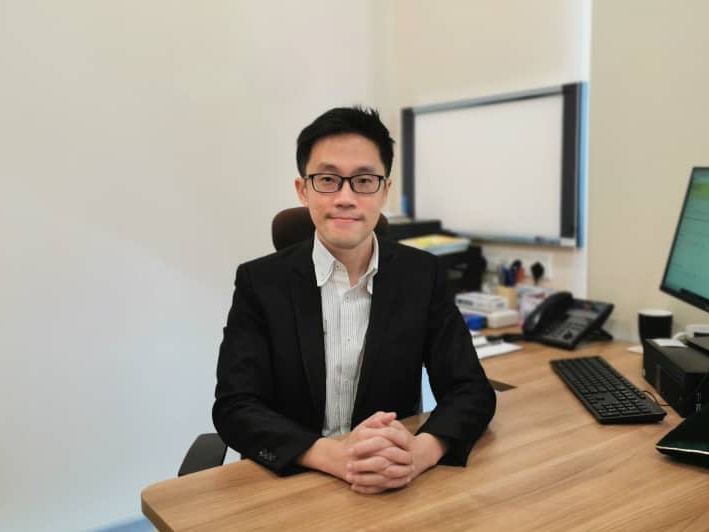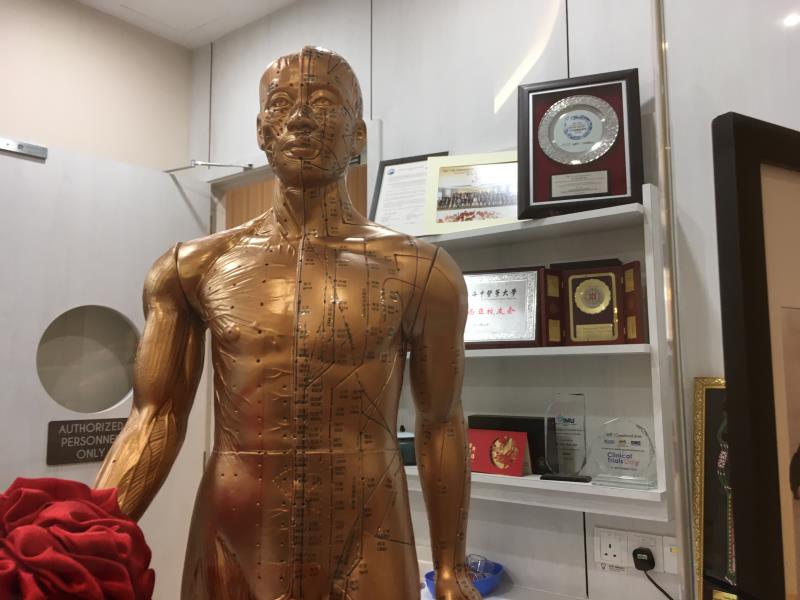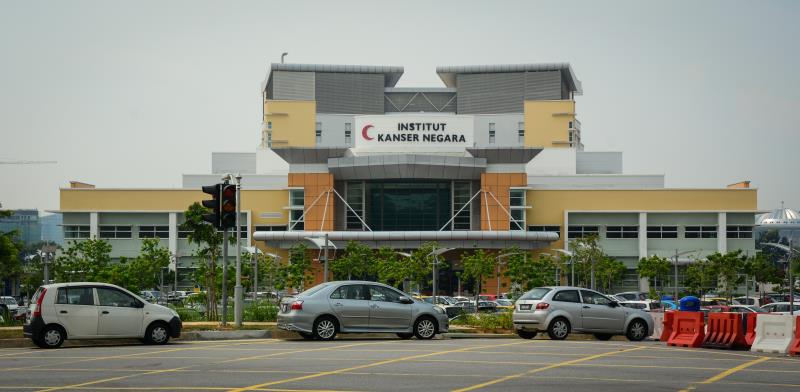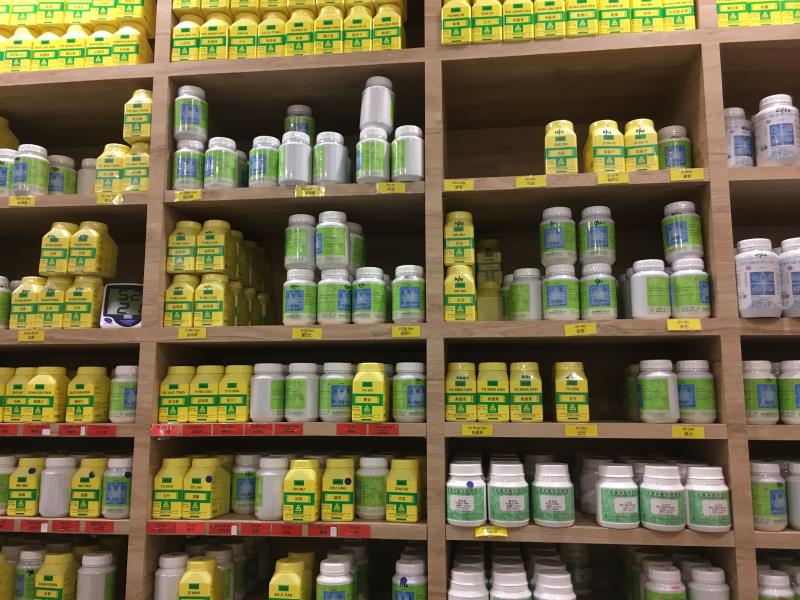East meets West: Experiences in integrative medicine
Medical Writer
 Dr Lim Ren Jye, consultant integrative medicine physician, specializes in the applications of traditional Chinese medicine in oncology. (Photo credit: Chan Si Yan)
Dr Lim Ren Jye, consultant integrative medicine physician, specializes in the applications of traditional Chinese medicine in oncology. (Photo credit: Chan Si Yan)Integrative medicine is a field that incorporates elements of traditional and complementary medicine into conventional methods of diagnosis and treatment to help address patient needs holistically. MIMS Doctor spoke to Dr Lim Ren Jye, consultant integrative medicine physician and former head of the National Cancer Institute’s T&CM Unit, on his experiences in the field and the ongoing work of bringing traditional medicines into modern practice.
When asked to define integrative medicine (IM), Dr Lim Ren Jye simply asks in return: “What is the best treatment option available from either side? We offer that.”
“Either side” in his case refers to the seeming opposite fields of conventional Western medicine versus traditional and complementary medicine (T&CM). As someone with academic qualifications and clinical experience in both fields, Lim knows their strengths and weaknesses.
“When the patient comes to you (as an IM physician), you are fully aware of what they want, whether it’s a curative or palliative approach. T&CM can help with some of these things,” said Lim. “If their disease has good chances under curative treatment, you guide the patient back towards conventional medicine and get it done … the important thing is achieving what’s in the patient’s best interests.”
Though he specializes in the applications of traditional Chinese medicine (TCM) in oncology, Lim clarifies that he is neither an oncologist nor a complementary medicine specialist; rather, he acts as a bridge, helping to determine and prescribe treatment options from both fields on a case-by-case basis.
“I think that’s an important distinction to make, in case any oncologists think that this doctor prescribes chemotherapy,” said Lim wryly. “Rather, people with my training are aware of the details of chemotherapy treatment. What we do instead is help optimize a patient’s treatment regime; for example, we can tackle adverse effects from chemotherapy using T&CM tools like acupuncture or herbs, while trying to minimize any possible interactions with their Western medications.”
The road to integration
 Integrative medicine services can incorporate elements of traditional Chinese medicine such as acupuncture and herbal medicines to alleviate adverse effects from conventional cancer therapies.
Integrative medicine services can incorporate elements of traditional Chinese medicine such as acupuncture and herbal medicines to alleviate adverse effects from conventional cancer therapies.After finishing his housemanship at Hospital Tuanku Ja’afar in Seremban and 3 years as a medical officer in Klinik Kesihatan Mantin, Lim took the role of assistant director of policy and development at the T&CM Division at MOH headquarters.
“After about a year, I was offered a JPA scholarship to do a Masters in Integrative Medicine,” said Lim. “At the time (around 2007–2008), Malaysia had just launched integrated T&CM services at three hospitals; Hospital Kepala Batas in Penang, Hospital Sultan Ismail (HSI) in Johor Bahru, and Hospital Putrajaya.”
At their inception, the T&CM services were staffed by specialists from overseas due to a lack of local expertise. Recognizing a need for in-house personnel who were qualified to both work with Western-trained specialists and prescribe appropriate herbal medicines, the MOH chose several medical officers for further education in universities abroad.
“Initially, they wanted to send me for a Masters in TCM, but it didn’t make sense for someone like me—a Western medicine-trained doctor—to do so. I didn’t have a background in TCM,” says Lim. “Instead we went for IM, which was also in line with the government’s intended direction; they needed someone who could both work with the oncologists and prescribe TCM treatments such as herbal medicines and acupuncture. If they had a pure Chinese medicine specialist, it would have been difficult for them to work with the doctors.”
Lim was sent to the Shanghai University of TCM, where the training was “like being used as a houseman again”, as his cohort was rotated through different hospital departments and actively involved in clinical management and research.
Building local capacity
 Lim helped to start the Traditional and Complementary Medicines Unit at the National Cancer Institute in 2013. (Photo credit: Phuong Nguyen/Shutterstock)
Lim helped to start the Traditional and Complementary Medicines Unit at the National Cancer Institute in 2013. (Photo credit: Phuong Nguyen/Shutterstock)In 2011, he returned to the MOH T&CM division, where he was later promoted to head of policy and development. Preferring clinical rather than policy work, he moved to Hospital Putrajaya as a visiting physician in herbal oncology. In 2013 he relocated to the nearby National Cancer Institute (Institut Kanser Negara, IKN) as the head of its newly launched T&CM Unit, into which Hospital Putrajaya’s T&CM services were eventually merged.
“When we were building the team, I sent other people to different parts of China; one to Tianjin, another to Beijing, others to Guangzhou. I myself had already been to Shanghai,” said Lim. “We couldn’t send more than a few personnel over there, what we needed to know was what the strengths and unique features of different provinces and first-line hospitals were. Everyone came back with some unique area of knowledge that they could share with the rest.”
Eventually, Lim was “crazy enough” to undertake a PhD in Chinese Medicine in Oncology part-time at the Nanjing University of Chinese Medicine while still practicing in IKN.
“It was really torturing, going back and forth between Nanjing and here three to four times a year,” said Lim, who credits the guidance of his mentors as well as the support he received from his team. “But I felt like the government really needed someone in this line.”
As part of his PhD, he was the principal investigator of a systematic review and a clinical trial conducted with the IKN T&CM Unit on Chinese herbal medicines as adjunct therapies in radiotherapy-induced xerostomia in head and neck cancer patients. Both studies were eventually published papers. [Complement Ther Clin Pract 2018;30:6–13; Support Care Cancer 2019;27:3491–3498]
“What we found was while the evidence was somehow inconclusive in the systematic review, there was still a basis for using herbal medicines … the thing was that studies on TCM methods tended to differ from those on conventional medicines, because they allowed physicians to personalize treatment for each patient, rather than standardizing everyone to the same dosages,” said Lim.
A team of partners
 Herbal medicines prescribed are formulated and standardized according to strict quality control standards by the T&CM unit dispensary.
Herbal medicines prescribed are formulated and standardized according to strict quality control standards by the T&CM unit dispensary.In discussing his team, Lim highlighted the pharmacists he works with as key partners when it comes to integrating herbal treatments into his practice, in particular Chan Si Yan, an oncology pharmacist who transferred over from Hospital Ampang to assist the fledgling T&CM Unit at IKN.
“She joined us in early 2014, when we started offering herbal medicine options. We were lucky to have her during that time; she had done some work in chemotherapy and cytotoxic drug reconstitution (CDR) in Hospital Ampang as well as in patient counselling services, and she brought all that experience to help us build up our new dispensary,” said Lim.
Under the previous system of dispensing, herbal medicines had to be packed at the factory level, which produced standardized sachets of powdered herbs. This tended to lead to issues of cost, patient compliance, and dosage accuracy, said Lim.
“With sachets being standardized in weight, when you had patients on a lower strength dosage prescription, they would need to somehow halve the powder inside ... You can’t just ask a patient to weigh it at home, it’s difficult and impractical, especially for older people or those with eye problems,” said Lim. “Instead we adopted the system they use in Taiwan, where the doses are weighed and managed in the pharmacy, and [Chan] was the one who built it.”
As he and his fellow doctors specialized more in clinical work, Lim acknowledged that they depended on pharmacists to support them in other areas, such as quality control, product safety, active surveillance, and stock management.
“The pharmacists in our T&CM unit were even crazier in the sense that on top of all their work, they were also involved in preclinical and clinical research, as well as teaching in local universities,” said Lim, laughing.
A tale of two countries
On being asked about his experiences in hospitals in China, Lim described it as a quite different working environment.
“In terms of working culture, we’re closer to the UK, while they’re closer to the US. For example, the doctors there hardly take blood; venal punctures are usually done by the nurses. When they found out that the doctor from Malaysia could do venal punctures, they started asking me instead, especially for some of the difficult cases,” said Lim, smiling. “Whereas the way we’ve been brought up here, we do almost everything.”
Lim noted that there was also a stronger emphasis on documentation, as the Shanghai doctors would always take time after ward rounds to key in their reports.
“That’s something that Malaysian doctors can be quite bad at; not only writing things down, but recording key information,” said Lim. “In Shanghai, their practice has led to a very good research database there for retrospective research, with a large pool of electronic data. If we needed to do similar research in a Malaysian setting … there’s a lot of gaps to be filled up in comparison.”
Another key difference, he added, was that IM physicians specializing in oncology were trained to prescribe chemotherapy as well as medication in China, whereas in Malaysia only those in the national registry of oncologists were qualified to do so.
Future directions
Lim eventually left IKN to help build a new T&CM unit under a private hospital in Selangor. Despite now practicing in the private sector, Lim keeps in close touch with his public sector colleagues, and continues to explore potential clinical research with them, whether it’s pilot or feasibility studies.
“I still believe there has to be a network between the private and the public [sectors], and research is the best platform for that,” said Lim, who hopes that the patient pool at his current practice can assist in further research.
Lim also teaches at universities and hopes that his current place of practice can be used as a training platform for those looking for clinical experience in TCM, noting that there are few sites in the country that offer opportunities in that area.
“At the moment, the only hospital in Malaysia that offers training for TCM students is Tung Shin Hospital in Kuala Lumpur; most of the graduates or those who need to do their internship, they have no place to practice. They have to go all the way to China instead,” said Lim. “Our future direction should be to bring some of those students here to be trained … as [a private practice], we shouldn’t focus only on business, but on research and training as a way to long-term sustainability.”